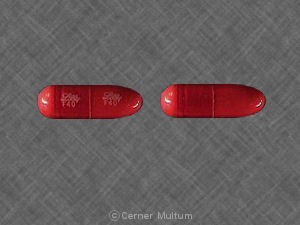Secobarbital Interactions
There are 612 drugs known to interact with secobarbital, along with 13 disease interactions, and 2 alcohol/food interactions. Of the total drug interactions, 36 are major, 549 are moderate, and 27 are minor.
- View all 612 medications that may interact with secobarbital
- View secobarbital alcohol/food interactions (2)
- View secobarbital disease interactions (13)
Most frequently checked interactions
View interaction reports for secobarbital and the medicines listed below.
- Abilify (aripiprazole)
- Acetylsalicylic Acid (aspirin)
- Acidophilus (lactobacillus acidophilus)
- Adderall (amphetamine / dextroamphetamine)
- Ambien (zolpidem)
- Aridol (mannitol)
- Ativan (lorazepam)
- Augmentin (amoxicillin / clavulanate)
- Benadryl (diphenhydramine)
- Benicar (olmesartan)
- Cymbalta (duloxetine)
- Flax Seed Oil (flax)
- Humulin R (insulin regular)
- Klonopin (clonazepam)
- Lamictal (lamotrigine)
- Lexapro (escitalopram)
- Lipitor (atorvastatin)
- Lovenox (enoxaparin)
- Lyrica (pregabalin)
- Nexium (esomeprazole)
- Paracetamol (acetaminophen)
- Percocet (acetaminophen / oxycodone)
- Remeron (mirtazapine)
- Rozerem (ramelteon)
- Synthroid (levothyroxine)
- Vyvanse (lisdexamfetamine)
- Xanax (alprazolam)
- Zofran (ondansetron)
- Zoloft (sertraline)
- Zyrtec (cetirizine)
Secobarbital alcohol/food interactions
There are 2 alcohol/food interactions with secobarbital.
Secobarbital disease interactions
There are 13 disease interactions with secobarbital which include:
- acute alcohol intoxication
- drug dependence
- liver disease
- porphyria
- rash
- respiratory depression
- cardiovascular
- prolonged hypotension
- adrenal insufficiency
- depression
- hematologic toxicity
- osteomalacia
- paradoxical reactions
More about secobarbital
- Compare alternatives
- Reviews (14)
- Side effects
- Dosage information
- During pregnancy
- Drug class: barbiturates
- Breastfeeding
Related treatment guides
Drug Interaction Classification
| Highly clinically significant. Avoid combinations; the risk of the interaction outweighs the benefit. | |
| Moderately clinically significant. Usually avoid combinations; use it only under special circumstances. | |
| Minimally clinically significant. Minimize risk; assess risk and consider an alternative drug, take steps to circumvent the interaction risk and/or institute a monitoring plan. | |
| No interaction information available. |
See also:
Further information
Always consult your healthcare provider to ensure the information displayed on this page applies to your personal circumstances.


